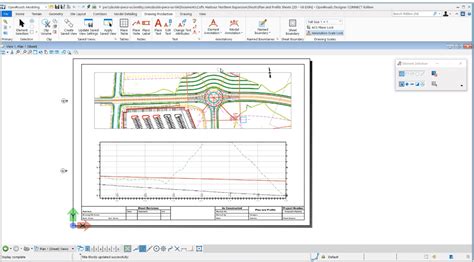Introduction

Civil engineering, the backbone of our built environment, relies heavily on mathematical principles to transform abstract concepts into functional structures and dependable infrastructure. Mathematics empowers civil engineers to analyze, design, construct, and maintain a vast array of projects, ranging from towering skyscrapers to resilient bridges.
Algebra and Geometry in Civil Engineering
Algebraic equations and geometric principles are indispensable in every aspect of civil engineering. Engineers utilize systems of linear and nonlinear equations to model complex structures, determine stress distributions, and calculate deformations. Geometric principles, including trigonometry and calculus, enable precise calculations of angles, lengths, and volumes.
Statistics and Probability in Civil Engineering
Civil engineers employ statistical methods to analyze data, assess risks, and make informed decisions. Statistical techniques help engineers evaluate the safety and reliability of structures, optimize construction processes, and predict future traffic patterns. Probability theory plays a crucial role in determining the likelihood of extreme events, such as earthquakes or floods, and in designing infrastructure that can withstand these hazards.
Differential Equations in Civil Engineering
Differential equations govern the continuous variation of physical quantities with respect to time or space. In civil engineering, differential equations are used to model dynamic behavior, including vibrations, fluid flow, and heat transfer. Engineers apply differential equations to analyze the stability of structures, design dams and levees, and optimize transportation systems.
Numerical Methods in Civil Engineering
Complex engineering problems often require numerical methods to obtain solutions. Engineers use computational techniques, such as the finite element method (FEM) and the boundary element method (BEM), to solve complex equations and simulate the behavior of structures. Numerical methods enable engineers to analyze large-scale systems, optimize designs, and ensure the integrity of infrastructure.
Optimization Techniques in Civil Engineering**
Optimization techniques help civil engineers minimize costs, maximize efficiency, and improve the performance of infrastructure. Linear and nonlinear programming, genetic algorithms, and evolutionary algorithms are used to optimize structural designs, reduce construction time, and manage traffic flow. Optimization techniques empower engineers to create innovative solutions that meet the demands of a rapidly changing world.
Tables in Civil Engineering**
Tables play a vital role in organizing and presenting data in civil engineering. Here are some commonly used tables:
| Table Type | Purpose | Example |
|---|---|---|
| Design Criteria Tables | Provide guidelines for the design of structural elements and components, including safety factors, material properties, and load combinations | Table 6-1 in ASCE 7: Minimum Design Loads & Resistances |
| Traffic Volume Tables | Present data on the volume and distribution of traffic on highways and streets | Table 23 in the Highway Capacity Manual |
| Geotechnical Parameters Tables | Summarize the engineering properties of soils and rocks, such as shear strength, compressibility, and permeability | Table 1.1 in Coduto’s Foundation Design |
| Construction Cost Tables | Provide estimates of the cost of construction materials, labor, and equipment | R.S. Means Construction Cost Data |
Effective Strategies**
To enhance their mathematical proficiency, civil engineers should adopt the following strategies:
- Strengthen Fundamentals: Review and master the fundamental concepts of algebra, geometry, statistics, and calculus.
- Practice Regularly: Solve numerous problems to improve proficiency in applying mathematical principles.
- Utilize Technology: Leverage software and online tools to perform complex calculations, model structures, and optimize designs.
- Collaborate with Experts: Seek guidance from mathematicians and other professionals to deepen understanding of advanced mathematical concepts.
- Engage in Continuous Learning: Stay abreast of emerging mathematical techniques and research findings in civil engineering.
Step-by-Step Approach to Mathematical Problem-Solving**
- Define the Problem: Clearly articulate the problem statement and identify the variables involved.
- Gather Data: Collect relevant data and quantify the problem parameters.
- Establish Mathematical Relationships: Develop algebraic equations, differential equations, or other mathematical models that describe the problem.
- Solve the Equations: Employ appropriate mathematical techniques to solve the equations and obtain solutions.
- Analyze Results: Interpret the solutions and ensure they are consistent with real-world observations.
- Draw Conclusions: Summarize the findings and recommend appropriate actions or design solutions.
Frequently Asked Questions (FAQs)**
-
What is the most important mathematical concept in civil engineering?
– Differential equations -
How can I improve my math skills as a civil engineer?
– Practice, utilize technology, collaborate with experts, and engage in continuous learning. -
What are some examples of mathematical applications in civil engineering?
– Structural analysis, traffic modeling, geotechnical design, and construction optimization. -
How can mathematical models enhance infrastructure safety?
– By predicting structural behavior, identifying potential hazards, and optimizing maintenance strategies. -
What are the emerging trends in civil engineering mathematics?
– Machine learning, artificial intelligence, and advanced computational techniques. -
How can civil engineers contribute to society through mathematics?
– By developing innovative solutions to address global challenges, such as sustainable energy, climate resilience, and urban infrastructure.
